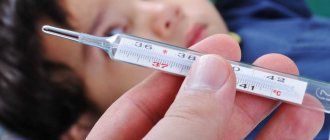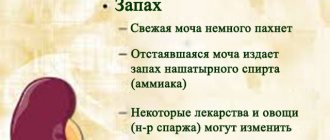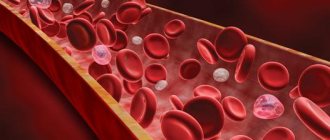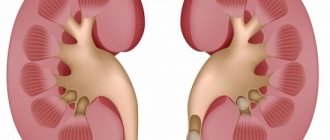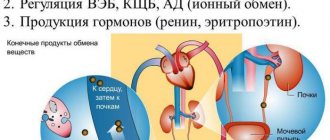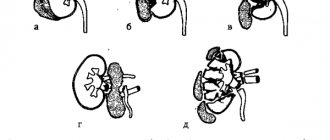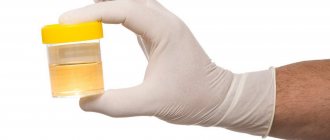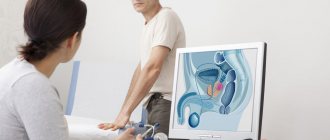More than 25% of the population of all age groups have encountered such an unpleasant phenomenon as sand in the urine. Finely dispersed formations that are excreted from the kidneys during urination can not only cause a whole range of unpleasant sensations, but also cause the development of a number of pathological conditions.
In addition, the very fact of the formation of tiny stones in the renal pelvis is a kind of signal about the onset of a borderline state, manifested in the precipitation of salts that are normally in dissolved form. Subsequently, they become the basis for the formation of the smallest concretions, popularly called sand.
Causes
The crystallization process occurs in the kidneys. Microcrystals appear, which over time take the form of grains of sand and stones that come out with urine. While moving through the urinary canal, they can cause pain to a person, its intensity depends on the size of the formations.
Sand in the urine in men and women can appear for a number of reasons:
- chronic diseases, heredity;
- inflammatory processes in the kidneys;
- changes in the walls of the urethral duct, their narrowing;
- bending of the ureter;
- disruption of urine outflow and thickening;
- pregnancy;
- congenital pathologies in children;
- metabolic disorder;
- problems in the intestines, for example, a defect in the mucous membrane;
- A common cause in children is pathology of the ureter.
There are also external factors that contribute to the appearance of sand:
- hot climate;
- excess protein food;
- lack of physical activity and too frequent sitting, which cause circulatory problems;
- small amount of liquid in the diet;
- frequent drinking of alcohol.
Preventive actions
When there is sand and small fragments in the bladder, the prognosis is usually good. Still, half of the patients experience relapses within 10 years. Women at risk should be monitored. For prevention purposes, it is necessary to maintain water balance, consume a minimum amount of salt, adhere to proper nutrition, and use high-quality products.
A healthy lifestyle is necessary, bad habits and alcohol are unacceptable. Low mobility is also one of the risk factors for the appearance of sand. Regular physical activity prevents sand retention in the kidneys. Pathology can occur at any age, but a careful and attentive attitude to your health will help you avoid serious problems in time.
Are salts in urine dangerous?
Sand in urine may not cause discomfort for some time. But with an increase in salt deposits, problems cannot be avoided. Crystals larger than 4 mm can damage the urinary canal and lead to inflammation. Salts increase the risk of pathologies of the urinary system:
- various forms of pyelonephritis;
- renal failure in acute or chronic form;
- diathesis;
- kidney stone disease;
- cystitis.
Diagnostics
Most often, sand in the urine is detected by chance, during a preventive examination or taking any tests. Informative diagnostic methods:
- Ultrasound of the kidneys;
- examination of urine samples in laboratory conditions under a microscope;
- scintigraphy is a diagnostic method in which a certain amount of a radioactive drug is injected into the body, allowing an image of the kidneys to be obtained using a gamma camera;
- X-ray;
- tomography - allows you to almost accurately determine the presence of stones and their location.
- a blood test that provides information not only about sand, but also about the presence or absence of inflammation;
- Ultrasound is necessary to determine the location of stones.
Based on the data obtained during diagnosis, the doctor determines the further treatment strategy, prescribes the necessary medications and makes recommendations.
Tomography machine
You can detect sand at home. Externally, urine will look like a cloudy orange liquid with small inclusions. Having folded a gauze cloth in several layers, you need to filter the liquid and inspect what remains. There may be pieces of accumulated salt or grains of sand. If they are white, this indicates possible cystitis. But it is necessary to understand that such observations are not enough. You should still contact a specialist. This will help avoid complications in the future.
Prevention
If you have a lot of sand in your urine, but there are no large formations, you need to take care of how to avoid so much salt.
The recommendations in this case are standard:
- drink a lot of clean water;
- exercise;
- eat a varied diet, and most importantly, eat right;
- try not to overload the nervous system, so as not to cause jumps in the acid-base balance;
- regularly take OAM and consult with a specialist;
- Visit a doctor on time for various pathologies.
Symptoms
Diagnosis is often difficult because symptoms may be absent for a long time.
In adults, the following symptoms are observed:
- Acute pain in the lumbar region occurs intermittently and can radiate to nearby areas. For example, move to the groin area or intestinal area. The cause of pain is damage and irritation of the ureter by stones.
- Discomfort and unpleasant sensations when going to the toilet. Clogging of the canals with deposits causes urinary disturbances. However, this does not eliminate the constant urge to go to the toilet.
- Red tint of urine due to vascular injury. Urine can change not only in color and density, but also in smell. The changes are caused by an excessive amount of salts, inclusions of blood, and in the advanced stage there are also purulent discharges that emit a specific odor.
- Swollen legs, sometimes eyes (in the form of pastiness).
- Periodic nausea and vomiting, fever.
Urination
The process of urination is a reflex act. Its reflex arc begins from receptors embedded in the wall of the bladder and react to its stretching. The first urge appears when the amount of urine in the cavity reaches 140-150 ml. When a certain volume limit is reached, the voiding center in the spinal cord orders the bladder muscles to contract and urine can be expelled from the bladder.
Why "may"? The fact is that urination is under the control not only of the spinal cord, but also of the brain, in particular the cerebral cortex, which means that a person is able to influence the situation with his consciousness: special muscles compress the urethra and do not allow urine to escape until circumstances allow it .
How kidneys work and why they are needed at all, people have been wondering for centuries. The ancient Chinese considered them “organs of fear” and, at the same time, a certain beginning from which the rest of the body’s structures grow. According to the teachings of the East, the “entry gate” of the kidneys is... the ears. And the ancient Jews argued that good motives of people come from the right kidney, and evil ones from the left.
Only in 1666, the Italian doctor M. Malpighi saw through a microscope tiny spherical “apples” in the outer layer of the kidney. He expressed the idea that they are the ones who create urine. In memory of his discovery, the capillary glomeruli of nephrons (and they were the “apples”) began to be called “Malpighian corpuscles.” And for another 200 years after that, it was believed that the kidneys “produce” urine, just as the salivary glands produce saliva, and the liver produces bile, that is, the kidneys produce exocrine glands. But in the middle of the 19th century. German scientist K. Ludwig suggested that the kidneys filter the blood. In this case, useful substances are retained, and unnecessary substances are eliminated. Subsequently, his hypothesis received brilliant confirmation.
Consequences
- Violation of the constant outflow of urine, the transition of urolithiasis to a chronic condition, in other words pyonephrosis. It leads to necrosis of the kidneys and their further death.
- Chronic renal failure caused by their inflammation.
- Blockage of the ureter with stones, its complete blockage. As a result, renal failure occurs, which can lead to necrotic processes.
- Excessive amount of blood in urine.
- Inflammatory process in the ureter, due to frequent damage and infections.
Regulation of urine formation
As in other studied systems, the regulation of kidney function can be nervous and humoral. As always, the two parts of the autonomic nervous system work in opposition. Thus, sympathetic nerves reduce urine formation (reduce filtration and increase reabsorption), and parasympathetic nerves do the opposite. The most significant “hormones of urine formation”: antidiuretic hormone (increases the return of water from the tubules), aldosterone (increases the absorption of sodium from the primary urine of the nephron into the blood) and auriculin formed in the heart muscle (reduces the reabsorption of sodium and increases its excretion in the urine).
Stability of indicators of the internal environment of the body is the main condition for normal metabolism and life of the human body. The unique significance of the nephron is that it takes on the entire burden of maintaining this function. It is enough for any element of the internal environment to exceed the permissible level, and the resulting excess will be immediately removed by the kidney. And vice versa: even a slight deficiency of a substance in the plasma will lead to its immediate retention and reabsorption in the nephron tubules. Thus, the main function of the kidneys is to maintain a constant internal environment of the body.
Treatment
Taking medications creates special conditions for the dissolution of salt formations and their release naturally after some time. Reducing in size, the stones no longer cause severe pain and injure the canals, leaving the body almost painlessly.
Among the drugs, two groups can be distinguished:
- Herbal - prescribed if pathology is detected at an early stage to relieve pain, remove sand and prevent the development of inflammation.
- Antispasmodics are drugs aimed at reducing and completely eliminating spasms of smooth muscles, in this case, tissues of the urinary tract.
- Antimicrobials – to fight inflammation.
Treatment may take weeks, sometimes even months. In the best case, a positive result occurs within one to two days. The duration of the course depends on the severity of the disease.
Ultrasonic crushing and surgical intervention are carried out if litholytic therapy does not produce results when the sand is converted into stones.
- In the first case, the device creates high-frequency sound waves that cause directed vibrations. They act on formations, breaking them into smaller particles, which are painlessly released together with urine.
- If the size of the stone has reached five centimeters, then there is only one treatment option - surgery.
Folk remedies
Traditional recipes can only be used after consultation with a doctor. If stones have already formed in the urine, then diuretic infusions cannot be taken. The ureter may be blocked by salt buildup.
To remove accumulated salts, drink diuretic tinctures:
- Finely chop the dried parsley root, bearberry, cornflower inflorescences, and birch buds.
- Mix the ingredients in equal proportions.
- Take one tablespoon of the mixture and add water to it, boil for 15 minutes.
- Strain the resulting broth and take 2 times a day.
To strengthen your immune system, you can drink rosehip tincture. You need to take it for two to three months:
- Pour a cup of rose hips into a thermos and pour 2 liters of hot boiled water.
- Leave for a few hours.
- Drink 150 milliliters every hour.
Compotes from lingonberries and cranberries also help with the development of urolithiasis. They improve urine output by flushing out small deposits.
Obviously, for large stones, such treatment methods should be abandoned. They are only useful in the presence of sand for additional prevention of stone formation at an early stage.
Nutrition
The diet is developed together with the attending physician. The most important point is to drink enough drinking water; it is increased relative to the patient’s usual diet (minimum two liters).
Features of the diet depending on the type of formation:
- urates - food of plant and dairy origin;
- phosphates - prohibit dairy products, it is recommended to eat lean meats and fish;
- calcium formations - porridge, stewed and boiled meat are added to the menu, sweet and hot spices are excluded;
- oxalates - foods rich in magnesium.
